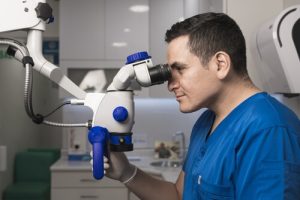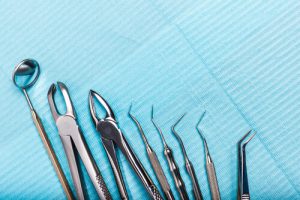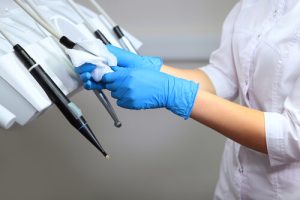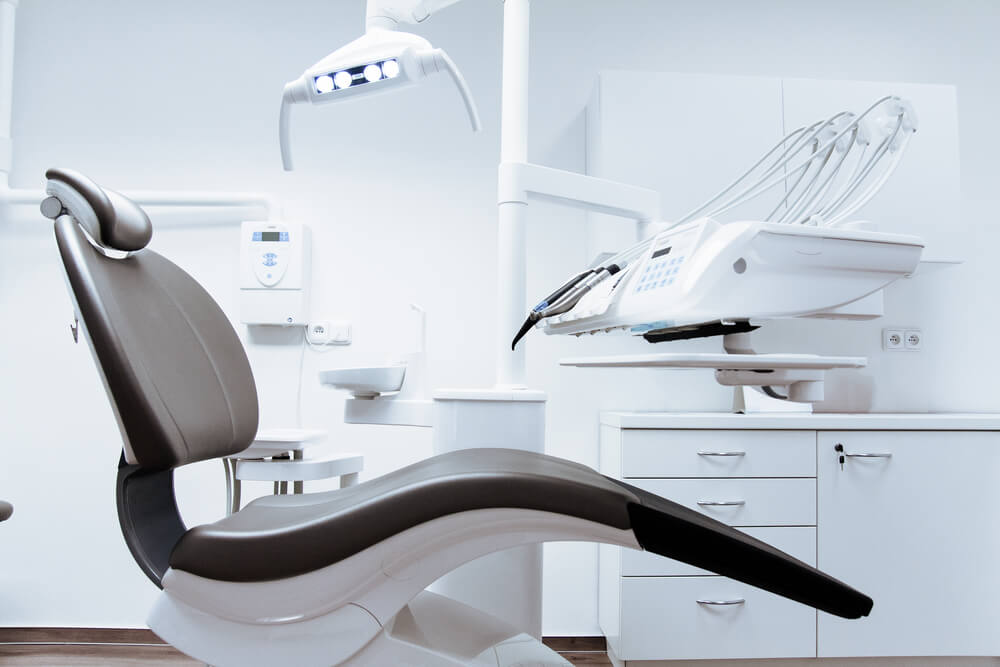In the dynamic world of dental care, professionals are tasked with maintaining the vitality of their patient’s oral health and the effectiveness and readiness of their toolkit. The essential dental supplies that drive successful diagnoses, treatments, and preventive measures are at the heart of their operations. These critical tools range from examination instruments and surgical devices to restorative materials and sterilisation equipment, each playing a vital role in ensuring optimal patient care. Ensuring a well-stocked inventory of these supplies is an integral aspect of every dentist’s duty, setting the stage for excellence in the dentistry field.
The importance of dental supplies in a dental practice
Dental supplies hold immense importance in a dental practice for a number of reasons:
- Quality of Care: High-quality dental supplies enable dentists to provide the best care without stress. They ensure accurate diagnosis and effective treatment, thus directly impacting patient outcomes.
- Efficiency: Modern dental tools and supplies can help increase efficiency by making procedures quicker and more comfortable, enhancing the patient’s experience and increasing the dentist’s capacity to treat more patients.
 Safety and Hygiene: Sterilisation equipment and disposable dental supplies ensure the dental practice maintains high standards of cleanliness and hygiene, reducing the risk of infections.
Safety and Hygiene: Sterilisation equipment and disposable dental supplies ensure the dental practice maintains high standards of cleanliness and hygiene, reducing the risk of infections.- Versatility: Various dental supplies allow dentists to perform a wide range of procedures, from preventive measures and cosmetic enhancements to serious surgical interventions.
- Patient Trust: The use of reliable and modern dental supplies can foster a sense of trust and confidence in patients. This can improve the patient-dentist relationship and contribute to better patient retention.
- Compliance: Having the correct dental supplies is also important for compliance with regulations and professional standards set by health authorities, dental boards, and insurance providers.
- Innovation: Staying updated with the latest dental supplies allows dentists to incorporate new technologies and techniques into their practice, leading to more innovative and effective treatment methods.
- Cost Effectiveness: While some dental supplies may be costly, their effective use can lead to better treatment outcomes, fewer repeat procedures, and ultimately more cost-effective care.
By ensuring they have the right dental supplies, dentists can provide high-quality, efficient, and safe dental care that wins patient trust and meets professional standards.
Common and essential dental supplies
Dental supplies can be broadly divided into several categories based on their purpose and use. Here are some of the common categories of innovative dental products:
- Examination Tools: These are used for routine check-ups and initial examinations. They include dental mirrors, explorers or probes, and periodontal probes for assessing gum health.
- Restorative Supplies: These are used to restore the function and aesthetics of teeth. This category includes dental filling materials (like amalgam, composite resins), dental crowns, bridges, dentures, and bonding agents.
- Prosthetics: Prosthetic materials such as dentures (complete or partial), bridges, and implants are essential for replacing missing teeth and restoring oral function. Click this link.
- Surgical Instruments: Dental surgeries require specific tools such as dental drills, elevators, forceps, and scalers for procedures like extractions and root canal treatments.
- Sterilisation and Disinfection Equipment: Autoclaves, ultrasonic cleaners, and disinfectants are crucial to maintain hygiene and prevent the spread of infections in a dental clinic.
- Endodontic Supplies: These supplies are specifically used for root canal treatments and include files, reamers, gutta percha, and sealants.
- Orthodontic Supplies: Used for the correction of misaligned teeth and jaws. These include braces, bands, wires, and other orthodontic appliances.
- Preventive Supplies: These help prevent dental diseases and include sealants, topical fluorides, and prophylactic pastes for professional cleanings.
- Radiology Supplies: These include X-ray machines, film or digital sensors, and protective aprons for taking radiographic images of teeth and jaws.
- Personal Protective Equipment (PPE): Essential for the safety of both patients and dental professionals. These include gloves, masks, eye protection, and gowns.
Each category of these dental supplies plays a unique and crucial role in providing comprehensive oral health care.
Essential Tools for Examination
Dental examinations are the foundation of good oral health. To conduct these exams, dentists rely on several essential tools. Here are the primary tools used in dental examinations:
- Mouth Mirror: This small mirror visualises and inspects areas of the mouth that are difficult to see directly. It’s especially useful for viewing the back teeth and inner surfaces.
- Explorer (Dental Probe): This thin, metal instrument is used to explore the tooth surfaces for signs of cavities or decay. It can also be used to check the depth of periodontal pockets.
- Periodontal Probe: This instrument is used specifically to measure the depth of the spaces between teeth and gums, known as periodontal pockets. It helps assess the health of the gums and diagnoses periodontal diseases.
 Tweezers (College Tweezers): These are used for placing and retrieving small objects in the mouth, such as cotton rolls or matrix bands.
Tweezers (College Tweezers): These are used for placing and retrieving small objects in the mouth, such as cotton rolls or matrix bands.- Dental Light: The overhead dental light provides illumination, enabling the dentist to accurately examine the mouth.
- Dental Loupes or Magnifying Glasses: These help the dentist to see fine details and can assist in spotting tiny cavities, fractures, or other anomalies that might not be visible to the naked eye.
- Intraoral Camera: This device provides a detailed view of the mouth’s interior, capturing images that can be displayed on a monitor for patient education.
- Digital X-ray Equipment: This tool is crucial for obtaining radiographic images of the teeth and jawbones, helping dentists detect issues beneath the surface of the gums.
These tools are essential in ensuring a thorough examination, leading to an accurate diagnosis and effective treatment plan.
Dental Restorative and Prosthetic Materials
Dental restorative and prosthetic materials play a critical role in repairing damaged teeth and replacing missing teeth, restoring both function and aesthetics to the patient’s mouth. Here are some commonly used materials:
- Dental Amalgam: An alloy of mercury with silver, tin, and copper, amalgam has been used for years as a durable material for fillings, particularly in back teeth.
- Composite Resins: These tooth-coloured materials are used for fillings in areas where aesthetics are important. They can be matched to the colour of the patient’s natural teeth.
- Glass Ionomer Cement (GIC): GIC is used for fillings, especially in areas not subjected to heavy chewing pressure. It releases fluoride, which can help prevent further decay.
- Dental Porcelain/Ceramics: These are used to create crowns, bridges, veneers, and inlays/onlays. They can be colour-matched to existing teeth and are known for their excellent aesthetics and durability.
- Dental Implants: Made from titanium or ceramic, dental implants replace the root portion of missing teeth and provide a foundation for crowns, bridges, or dentures. Read more here.
- Resin and Metal-based Denture Material: These materials are used to fabricate complete or partial dentures to replace missing teeth.
- Dental Cements: These are used as luting agents to permanently cement crowns, bridges, or inlays/onlays. They can also be used as a temporary filling material or for pulp protection.
- Dental Waxes: Used in various stages of dental treatment, from diagnostic wax-ups to the creation of temporary crowns.
- Gutta Percha: A material used in endodontics to fill the space inside the root of a tooth after it has been cleaned and shaped during a root canal treatment.
- Dental Impression Materials: Alginate, polyvinyl siloxane, and polyether are used to take accurate impressions of teeth and oral tissues.
These restorative and prosthetic materials help dentists to rehabilitate oral function and enhance the smile aesthetics of their patients.
Surgical Instruments and Their Role
Surgical instruments are crucial for carrying out various dental procedures ranging from simple tooth extractions to complex oral surgeries. Here are some of the essential dental surgical instruments and their roles:
- Dental Elevators: These are used to loosen the tooth in its socket before extraction. They help expand the tooth socket and separate the tooth from its ligament.
- Dental Forceps: Once the tooth is loosened, dental forceps are used to grip and remove the tooth from the socket. They come in various shapes and sizes to cater to different types and positions of teeth.
- Dental Scalpels: These are used for gum or soft tissue incisions during surgical procedures.
 Surgical Burs and Drills: Used for cutting hard tissues such as bone or teeth, often during procedures like crown lengthening or implant placement. Explore more here.
Surgical Burs and Drills: Used for cutting hard tissues such as bone or teeth, often during procedures like crown lengthening or implant placement. Explore more here.- Periosteal Elevators: These are used to retract soft tissues and expose the underlying bone or teeth.
- Bone Files: These instruments are used to smooth the edges of bone following extractions or other surgical procedures.
- Surgical Sutures and Needles: After surgical procedures, sutures are used to close the wound to promote healing. They come in both resorbable (dissolve on their own) and non-resorbable types (need to be removed).
- Hemostats: These plier-like tools are used to control bleeding by clamping onto blood vessels.
- Surgical Curettes: These are used to remove soft tissue or diseased bone from periodontal pockets or the site of surgical procedures.
- Rongeurs and Bone Chisels: These are used to cut or shape bone during oral surgical procedures.
Each instrument plays a vital role in making dental surgeries safer, quicker, and more efficient. The use of these tools requires skill and precision, which is why dentists undergo extensive training in their use.
The Importance of Sterilisation Equipment
In a dental setting, various sterilisation equipment is used to ensure all instruments are safe for patient use. Here are some of the most common types of sterilisation equipment:
- Autoclave: An autoclave is a device that uses heat, steam, and pressure to kill all forms of bacteria, spores, and other microorganisms on dental instruments. It’s the most commonly used method of sterilisation in a dental office.
- Dry Heat Oven: As the name suggests, this device uses high temperatures without moisture to sterilise instruments. While it takes longer than autoclaving, it is suitable for materials that may rust or corrode with moisture.
- Ultrasonic Cleaner: While not a steriliser, an ultrasonic cleaner uses high-frequency sound waves to remove debris and organic material from instruments before being sterilised in an autoclave or dry heat oven.
- Chemical Vapor Sterilizer: This device uses a combination of chemicals (alcohol, formaldehyde, ketone, water, and acetone) to create a vapour for sterilising instruments. It’s faster than a dry heat oven and does not cause corrosion.
- Chemical Sterilants: High-level disinfectants and sterilants are chemicals used to sterilise heat-sensitive dental instruments like certain plastic or rubber items.
- Glass Bead Steriliser: This device uses tiny, heated glass beads to sterilise small dental instruments quickly. However, they are not approved for use in some regions due to efficacy concerns.
- Sterilisation Pouches and Wraps: These are used to package instruments before sterilisation and keep them sterile until use. They usually have indicators that change colour when sterilisation is complete.
- Biological Indicators: These are used to verify the effectiveness of the sterilisation process. They contain spores that should be killed when the process is done correctly.
- Ultraviolet Chamber: Used to store sterilised instruments, the UV radiation kills any microorganisms that might contaminate the instruments after sterilisation.
- Instrument Washer/Disinfector: This machine cleans, disinfects, and dries dental instruments before sterilisation.
Each piece of equipment plays a crucial role in maintaining a high standard of infection control within dental practices. Remember, cleaning, disinfection, and sterilisation are three distinct steps in preparing instruments for safe reuse.
For dentists striving to provide the best care to their patients, having reliable and high-quality dental supplies is a non-negotiable factor. Cattani Compressors should be on your radar if you are searching for top-tier equipment for your practice. Known for their cutting-edge technology, durability, and excellent performance, Cattani Compressors are designed to meet the demanding needs of any dental practice, big or small. Whether you are establishing a new practice or upgrading your current one, Cattani offers a variety of options that align with your specific needs. Don’t compromise on your commitment to delivering outstanding patient care. Choose Cattani Compressors, a trusted name in the dental industry, for equipment that delivers reliable, robust, and efficient service to help you perform at your best.
References:
https://www.dentaltix.com/en/blog/all-equipment-you-need-have-your-dental-clinic
https://dentalpracticetransitions.henryschein.com/essential-equipment-to-have-in-your-dental-office/
https://optident.co.uk/manufacturer/essential-individuals/
https://www.dentalcompare.com/Dental-Equipment/
https://www.zoominfo.com/c/essential-dental-supply/529294057



